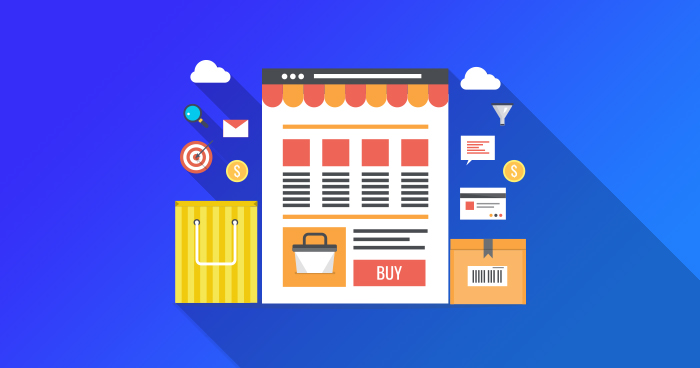- Home
- /
- E-Commerce
- /
- 4 E-commerce Trends to Watch Carefully for in 2019

E-commerce enjoyed a record-breaking year in 2018, with global sales revenues estimated to have reached $2.8 trillion, according to Statista. This year, this figure is expected to rise to $3.5 trillion. To put this in perspective, if the e-commerce industry were a country, it would slot into the fifth spot, ahead of the United Kingdom, whose GDP as of April 2018 was $2.61 trillion.
With such eye-opening figures, it’s little wonder there’s so much excitement surrounding the future of online retail. Amid all the hype about e-commerce, it’s easy to forget that this segment accounts for just 11.9 percent of the total retail sales around the world. Therefore, the market holds an extraordinary capacity for growth over the next decade.
Below, I identify the four trends that e-commerce entrepreneurs should pay the closest attention to:
1. Smaller businesses using big data
Yes, we’ve heard quite a lot about big data over the past two years, but it’s not going away. As more people come to grips with this new resource, this effort will increasingly separate the successful from the less successful e-commerce businesses. And this division will not be limited to behemoth e-commerce businesses either, because mid-range competitors too are now using their data reserves to mine unique insights.
Big data, in fact, helps entrepreneurs analyze shopping behavior, trends and what products it is that are selling. It’s been proven to help e-commerce businesses make improvements in customer service, security and mobile commerce. It also powers the AI which is revolutionizing the industry (more on this below).
In short, big data is likely to power future developments in your e-commerce business. If you are planning on staying in the industry long term, you would be wise to study the latest developments.
2. Excellent customer service
Shoppers are growing used to the convenience of e-commerce, and entrepreneurs need to ensure that the customer experience meets those people’s growing expectations. The purchasing journey needs to be smooth, reassuring and secure. Stores also need to be quick to respond to queries and resolve issues.
One American Express study has found that more than half of Americans surveyed had canceled a purchase due to bad service. But take heart; you needn’t be the entrepreneur on the other end of that type of transaction. Instead, there are a number of ways you can deliver outstanding customer service:
Ensure a smooth checkout: Too many e-commerce stores still have unnecessarily drawn-out checkouts. Consider whether you need any more than two stages, i.e., you can fill in the details on one page; then confirm those details and items on the next.
Be responsive: Whether it’s on social media or your website or via email or phone, your business should respond to any queries in a timely and professional manner. An increasing number of stores offer live chat on their sites, and the response of customers has been overwhelmingly positive.
Deliver a personalized experience: Use your customer’s browsing and purchase history to deliver a personalized shopping experience. This is something Amazon has turned into an art form in recent years, directing its customers to the products that are most relevant to them and that they are more likely to buy.
Listen to your customers: Be proactive in looking for feedback and asking your customers about their experience. By asking for feedback, you’ll shape a more holistic view of your business and how it is perceived. Don’t be afraid to address criticism, either, even if it’s in public. In this way, you’ll identify your weaknesses and prove to customers that you take complaints seriously.
Above all, understand that providing excellent customer service is no longer a bonus for an e-commerce business. It’s now the norm.
3. Enhanced AI
Without good, well-ordered data, you will not be able to embrace the latest technologies that can drive revenue to your e-commerce store. AI is already evident in many e-commerce stores. Those automated live chatbots, advanced data analytics
However, there are examples of stores taking it to the next level to deliver a highly personalized experience. Outdoor wear brand, The North Face, has recently unveiled a digitalized personal shopper which can guide customers to products. There are also voice search and mobile shopping, which enable people to shop on the move.
4. Improved personalization
One of the factors behind Amazon’s success is its advanced product recommendations algorithm, which drives up to 35 percent of the company’s total sales. Using the buyer’s shopping habits, interests and even browsing history, the e-commerce giant is able to promote the products the buyer is most likely to purchase.
Looking beyond Amazon, product recommendation engines have proven effective at delivering a personalized shopping experience and driving up revenue for stores. The key is to place those recommendations at optimum points in the purchasing process.
First, ensure you have recommended products visible to your shoppers on the home page or after the point that they sign in. Then, once they have added items to their basket, ensure you have suggested complementary items. You can also suggest items at checkout.
Final thoughts
Entrepreneurs who take the proactive approach, embrace the latest advances in tech and make use of data will reap the rewards in e-commerce. As AI becomes more mainstream, it is essential that
Search
Recent Posts
- 5 Future E-Commerce Trends for 2019
- 8 Tips for Running a Successful eCommerce Business
- 4 Simple Tips That Will Get Big Results for Your Business on Google Search
- New to Ecommerce? Save Yourself Thousands Yearly With These 5 Frugal Hacks
- 6 Routine Mistakes People Make When Setting Up a Dropshipping Online Store